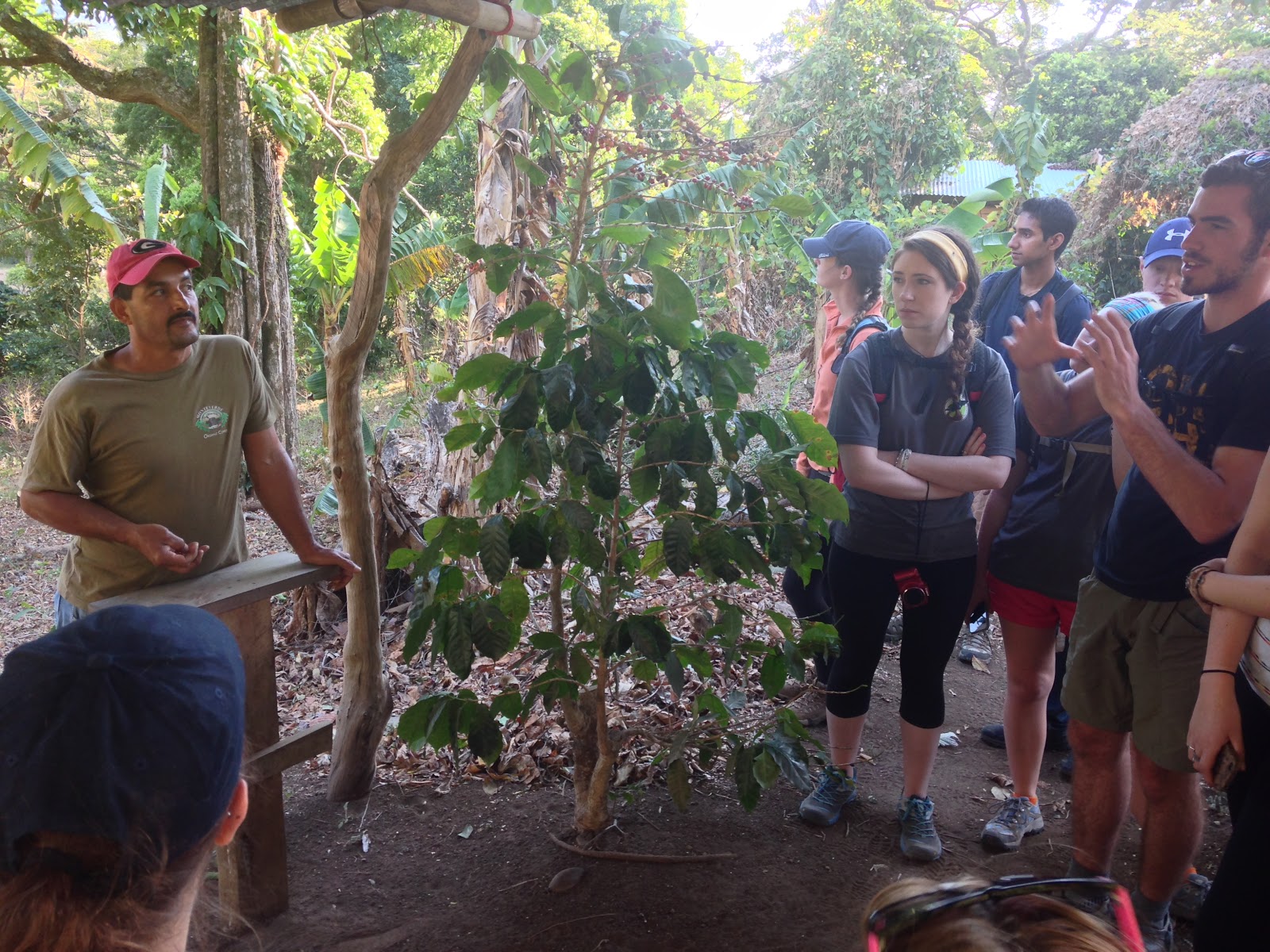Listen to the commentary
Real Audio | MP3 download
Over the recent spring break, I had the opportunity
to travel to Costa Rica with a colleague and a class of 21 U of I
undergraduates. Our mission: experience how the concepts students explore as
majors in Earth, Society and Environmental Sustainability play out in a nation
that occupies only about 35 percent of the land area of Illinois.
In one class meeting prior to the trip, we had
learned about coral reefs from graduate students working under UI professor Bruce
Fouke: the complexity of coral organisms, the diversity of life reefs support,
their sensitivity to changing conditions (especially the acidification taking
place as oceans absorb the increasing amounts of CO2 we dump into the
atmosphere) and more.
 On the Caribbean coast at Cahuita, we spent a
morning snorkeling to observe a living reef. Seeing a stingray close up was a
highlight for many in the group, but even those of us who missed that enjoyed
the opportunity to look upon living coral and swim among tropical fish sporting
a wide range of vibrant colors.
On the Caribbean coast at Cahuita, we spent a
morning snorkeling to observe a living reef. Seeing a stingray close up was a
highlight for many in the group, but even those of us who missed that enjoyed
the opportunity to look upon living coral and swim among tropical fish sporting
a wide range of vibrant colors.
Before the trip we got a crash course (with
Powerpoint) in the geology of Central America from SESE director and professor
of geology Steve Marshak. Through that we learned how the isthmus connecting
the north and south of the New World arose, and why it’s the site of so much
volcanic activity.
In Costa Rica, we hiked a flank of Arenal volcano, the best known of the country’s
six active volcanoes, and the one that’s been the most trouble since a massive,
surprise eruption in 1968. On Arenal, our local guide provided detailed
accounts of the volcano’s eruptions, gesturing toward relevant parts of the
mountainside with a stick, which he also used to draw very effective diagrams
in the sandy soil at our feet.
And then
there were the coffee plantations. We saw first a conventional operation, which
bore one sort of beauty. It was “clean” in the way a typical cornfield in
Illinois is—straight, evenly spaced rows with little growing other than the
crop that yields direct economic benefit.
 Later the
same day, we visited a place where “shade grown” coffee comes from, and we
experienced beauty of a different sort altogether. The pleasingly complex scene
there included coffee bushes, of course, but also various bananas, oranges and
other fruits, as well as native overstory trees. Surrounded by the diversity of
life in that environment, it was easy for me to understand why the farmer (our
guide) responded “a day picking coffee” when a student asked what part of his
work was most satisfying.
Later the
same day, we visited a place where “shade grown” coffee comes from, and we
experienced beauty of a different sort altogether. The pleasingly complex scene
there included coffee bushes, of course, but also various bananas, oranges and
other fruits, as well as native overstory trees. Surrounded by the diversity of
life in that environment, it was easy for me to understand why the farmer (our
guide) responded “a day picking coffee” when a student asked what part of his
work was most satisfying.
Beyond our
field experiences in Costa Rica, we were also treated to classroom time with some
amazing people.
Perhaps
the crowning jewel of our trip was the opportunity to sit with Marvin Rockwell and
hear him tell the story of how four Alabama members of the Society of Friends
(aka Quakers) established a settlement at Monteverde in the early 1950s. That
settlement has benefited conservation in Costa Rica and the wider world in
innumerable ways, and Rockwell, now 91, was one of the people who went to
incredible lengths to make it happen.
Credit for the success of this trip goes to my
colleague in the School of Earth, Society and Environment, Anna Nesbitt, who
collaborated with Anibal Torres from the Monteverde Institute in Costa Rica to
put it together. Our students and I owe them both a great debt of gratitude.



